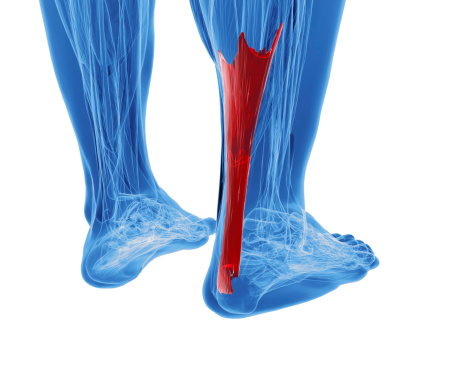Can hill training increase risk of injury?

In late March, thousands of runners from all over the country will take to the streets of Chicago for the city’s “biggest running party”- the Shamrock Shuffle.
And, while the course’s 8 kilometer route is appropriately Midwestern in its relative flatness, many runners may “head for the hills” as part of their training.
Running inclines and declines can offer many benefits to runners such as increased speed and strength. But, there also has been a concern that hill training may stress the body to the point of injury.
However, new research shows that hill training does not increase the risk of one of the most common running injuries, damage to the Achilles tendon.
The Achilles tendon, the largest tendon in the body, connects the calf muscle to the heel and helps absorb shock and generate push off during running. Because of its central role in running and the repeated stresses put on it, the Achilles tendon is prone to injury. This issue affects nearly 52 percent of runners at some point in their career, and once injured, can be a very difficult and lengthy injury to treat
Researchers at Brigham Young University used ultrasound imaging and an adjustable treadmill to discover that the tendon is capable of adapting to uphill and downhill running better than previously believed.
“Over time, runners adapt to the forces placed on their body, so even when the forces are higher (running downhill), if the adaptation process is gradual, the injury risk drops,” says Katy Andrews Neves, one of the authors, in a press release. “Our bodies are amazing and are very good at adapting to the conditions we put them in.”
While the research, conducted on experienced runners, indicates periodic sessions of hill running poses no additional risk to Achilles tendons, athletes need to be mindful of how they are incorporated into their workouts.
“Hill training is a very effective tool for runners looking to get faster and stronger,” says Dr. Gregory Primus, an orthopedic surgeon at Advocate South Suburban Hospital in Hazel Crest, Ill. “But, like many training methods, people need to ease into them and not overdo it.”
Dr. Primus stresses the importance of adequate and correctly performed warm up and cool down exercises and he urges people to pay attention to what their bodies are telling them.
“Every runner is different, so it’s very hard to give strict guidelines on how much and how frequently you should use inclines and declines for training,” he says. “But if you are running with an injury, the intensity of hill work can make things worse. So, people need to listen to their bodies and use common sense when it comes to running hills.”
Stretching after a proper warm up, says Dr. Primus, can also help minimize the chance of Achilles tendon injury. Here are a few of his recommended basic stretches:
- Place the leg to be stretched behind and lean forward, ensuring the heel is kept in contact with the floor at all times. Hold the stretch for 20 to 30 seconds and repeat three times.
- Place the leg to be stretched behind and lean forward, but be sure that leg is bent at about a 30 degree angle. Lean against a wall keeping the heel of the rear leg down. Hold the stretch for 20 to 30 seconds and repeat 3 times.
- Stand on a step with the toes on the step and the heels off the back. Carefully lower the heels down below the level of the step until you feel a stretch. Hold for 15-20 seconds. This should be performed with the knee straight and then repeated with the knee bent to make sure you are stretching both muscles. You should feel a gentle stretch. Make sure you have something to hold on to.
Dr. Primus says that some runners with recurrent Achilles pain might have tendonitis that may require a formal evaluation and treatment. He says that a physical therapist can apply appropriate treatments and recommend eccentric, or “negative,” exercises and other rehabilitation activities that can help speed recovery.
Related Posts
Comments
One Comment
About the Author
Nate Llewellyn, health enews contributor, is a manager of public affairs at Advocate Medical Group. Nate began his career as a journalist and builds daily on his nearly 20 years of writing experience. He spends most of his free time following his wife to their two sons’ various activities.


















As a soccer player i have always found it usefull to do hill training because it really helps build resistance and stamina which is greatly needed in my sport.